The Tortoise and the Hare – From Lisbon to the Algarve
by Luis Teixeira da SilvaThe Tortoise and the Hare:
Rambling or racing from Lisbon to the Algarve
Portugal has just been voted the winner in the best European destination for American tourists, as voted by readers of 10Best Readers’ Choice and USA Today: www.10best.com/awards/travel/best-european-country. As the country’s capital, many intercontinental flights stop over in the Portuguese capital. While this may be an inconvenience for some, it presents a wonderful opportunity to experience the city (one of Europe’s most popular weekend getaways) and also to choose the way in which to connect to the visitor paradise of Portugal, the Algarve, located at the southernmost tip of the country, so here we let you know the top priorities from Lisbon to Algarve.
Portugal is one of the world’s 20 most visited countries, with over 13 million people visiting the country every year. After a long-haul or transatlantic flight, a few days in Lisbon are an opportunity to overcome jet lag and to adjust to the different weather and gastronomy, in the city voted by Food and Wine magazine as one of the world’s most romantic.
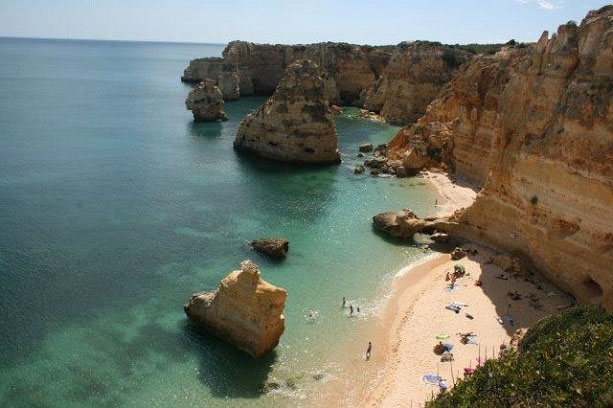
Being based in Lisbon is convenient in that most tours start in the capital. When on a short stay, highly recommended is a visit to Cascais with its beautiful cobbled streets and the amazing sweeping views over the bay and the Tagus estuary, and a wander through the medieval city of Sintra. The city’s Pena Palace was voted the continent’s most attractive castle by European Best Destinations, beating Neuschwanstein and Segovia’s Alcazar to the post. Only 30 kilometres (less than 20 miles) west of Lisbon, venture out by catching the train at the Cais do Sodré station near the Tagus River, which passes underneath the impressive 25th April bridge linking the popular Docas area to the Christ the Redeemer statue on the southern banks of the river. You will also pass the Torre de Belém and the Monument to the Discoveries, testament to the golden years of Portuguese maritime exploration. In the same vicinity, the Jerónimos monastery is a wonderful example of Manueline architecture (named after the King who ordered it built). Further along, pass Estoril, in the earlier part of the 20th century the place where the European wealthy congregated. The imposing casino, the country’s largest, is easily spotted from the train. Then hop on a bus or do a tour of Sintra, and make sure to try some of the sumptuous pastry!
Back in Lisbon, the options are almost endless. Stroll down Rua Augusta which Condé Nast Traveler has voted the street one would most wish to visit before dying! Climb up to St. George’s Castle and gaze out over Lisbon’s seven hills. Explore the Chiado with its fado singers and traditional dishes. Visit the modern redevelopment of the Expo area, with its modern architecture, cable car ride, scenic tower, views over the Vasco da Gama Bridge and Europe’s largest aquarium.
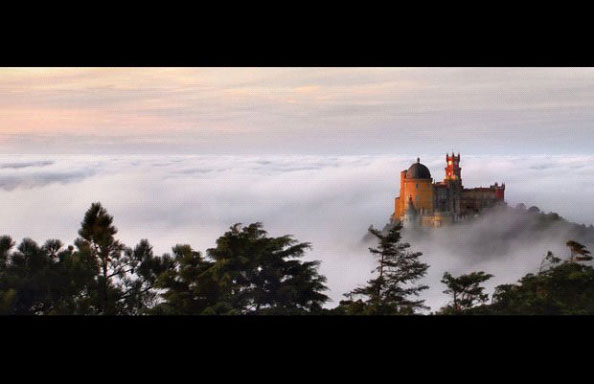
Ucityguides has ranked Portugal the 6th most beautiful country in the world, in a list topped by Italy, Spain and France, and which includes perennial favourites Brazil, South Africa and the USA. From Lisbon to Algarve, your final destination, beckoning, will you now be anxious to race to the California of Europe or tease your senses by meandering slowly through the Alentejo province?
If you choose the former, there is no better way to experience Portugal’s world-class infrastructure than to cross the Vasco da Gama Bridge and head straight down the A2 highway for an approximately two-and-a-half hour journey to the Algarve. Once there, the A22 highway will take you east to Vilamoura, Faro, Tavira and Spain and west to Lagoa/Carvoeiro, Portimão, Lagos and Sagres, including crossing the fabulous bridge over the Arade River.
If your choice is to take your time down to your final destination, then cross the 25 de Abril bridge, pass Christ the Redeemer and continue south on the A2 until the exit at Alcácer do Sal. Take the national road which gives you a bird’s eye-view of the Sado River and one of the largest rice plantations in the country. Make the most to stop off for a bite to eat at one of the simple road-side restaurants serving typical Alentejo dishes.
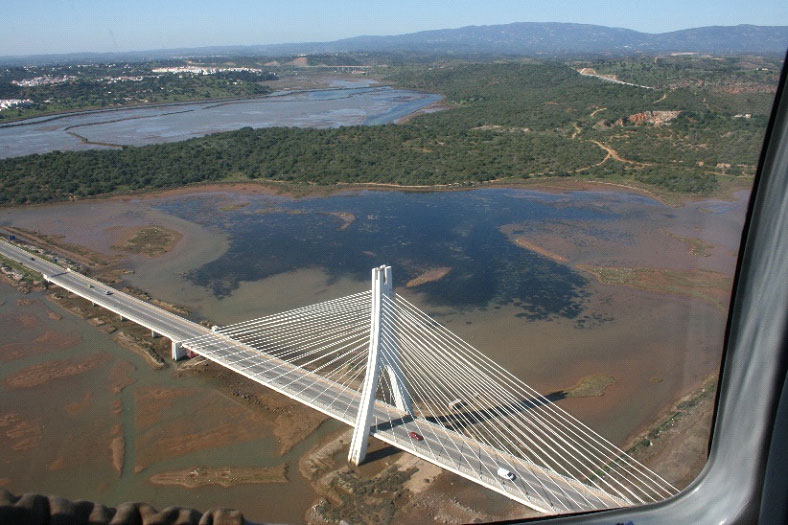
After probably having overindulged on generous portions, make your way to the coastal road and be prepared to spend a few hours on a meandering road, but well worth the effort to turn off to visit Porto Covo, Vila Nova de Milfontes, Zambujeira do Mar and Aljezur. Before heading down towards Lagos and the western Algarve, make one more stop – take the circular route via the beaches at Bordeira and Carrapateira.
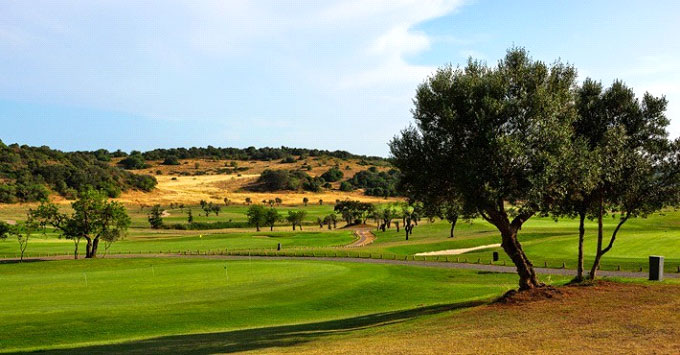
Nothing drives home the reason why the World Travel Awards have anointed the Algarve as Europe’s leading beach destination than looking out at miles of pristine beach, sand dunes and river, knowing that some miles further south, lies the first of the 40 golf courses which contributed to the World Golf awards voting Portugal as the World and Europe’s leading Golf Destination for 2014. Just a small part of the reason why the Algarve is the Best Place in the World to Retire.
Tourism Drives Revival in Portuguese Economy
by Luis Teixeira da SilvaTourism Drives Revival in Portuguese Economy
Portugal’s tourism revenue grew 12.37% in 2014, according to the National Institute of Statistics (INE), reaching €10.4 billion in revenue and contributing more than €7 to Portugal’s balance of trade. The increase represents the third successive year of impressive growth for a sector that represents around 5% of GDP (Gross Domestic Product), employs 8% of Portugal’s working population.
Portugal is one of the world’s 20 most visited countries, with over 13 million people visiting the country every year.
The UK, Spain, France, Brazil and Germany saw the greatest rise in tourist numbers between 2010 and 2014, with Portugal’s internal market improving 13% in 2014 alone. In 2014 the rate of growth (11%) in number of overnight stays by tourists grew at a rate of four times that of neighbouring Spain. 2014 saw Portugal achieve a record 45 million overnight stays.

The country’s improved tourist performance is linked to the country’s international reputation as a quality destination. Globally, Portugal has received around 8,000 mentions in global press during the year.
Food and Wine magazine voted Lisbon as one of the world’s most romantic cities, ranking in 8th position among the 24 finalists led by perennial favourites Paris and San Francisco. The city achieved its ranking due to its gastronomy, beautiful views and friendly people. In 2012 Lisbon was voted European City by London’s Academy of Urbanism, and was recently considered a top destination by Tripadvisor.
European Best Destinations voted Sintra’s Pena Palace as the continent’s most attractive castle, beating Neuschwanstein and Segovia’s Alcazar to the post.
Hostelworld voted 8 of Portugal’s hostels among the leading in the world. Oporto and Lisbon shared honours as the two cities vied successfully for top positions in a number of categories. The Yes Porto Hostel was voted the safest in the world.
Ucityguides has ranked Portugal the 6th most beautiful country in the world, in a list topped by Italy, Spain and France, and which includes perennial favourites Brazil, South Africa and the USA. The Bloom Consulting Country Brand Ranking has placed Portugal in 10th place among European tourism destinations, highlighting its gastronomy, beaches and surfing. Madeira has been voted the best destination in Europe in which to usher in a new year. And Condé Nast Traveler, the highly respected travel publication, has voted Rua Augusta, located near the river in Lisbon, which is the world’s 9th most photographed city, the street one would most wish to visit before dying, ahead of Lombard Street in San Francisco and the Via Margutta in Rome! Cais da Ribeira in Porto pushed Venice’s Grand Canal into 9th place.

The World Golf awards have voted Portugal the World and Europe’s leading Golf Destination for 2014. The World Travel Awards have also anointed the Algarve as Europe’s leading beach destination.
And international owners of visiting vessels have voted Vilamoura, located in the Algarve, the world’s best international marina for 2015.
Among these myriad accolades, it was therefore perhaps not surprising that Portugal made it into the Top 10 (9th) of the Best Countries in the World to Retire, and the 2014 Retire Overseas Index ranked the Algarve ahead of 21 global locations including places such as Abruzzo in Italy, Barcelona in Spain, Istria in Croatia, Pau in France, Chiang Mai in Thailand, Istanbul in Turkey, Ambergris Caye in Belize, and Puerto Vallarta in Mexico, as the Best Place in the World to Retire.
Anyone wishing to put Portugal, and specifically the Algarve’s, credential and pedigree to the test, is encouraged to try out the destination for a month to get the feel for the pace of life and to properly research their options, before taking a decision as to whether it is the place for them.
Viva Culture! A Variety of Things To Do
by Luis Teixeira da SilvaViva Culture!
Empty streets, closed cafés and restaurants, hotels which give their staff a long winter off, and even beach bars which are disassembled, only to miraculously reappear in the spring, are well-recognised signs of life in a summer tourist destination. Walkers are in their element as they have trails to themselves. Cyclists find that the only traffic are the few locals who also venture off the beaten path. Beachcombers have a choice of endless stretches of golden sand. But, while wonderful for the visitor who likes the quiet at this time of the year, for most winter tourists the daunting challenge is to find a variety of things to do – viva culture.
With an increasing number of people considering spending time away during the colder and rainier winter months in their home countries, one of the most important questions on their minds is whether they will simply find enough to do, to keep them occupied while in a winter sun destination.
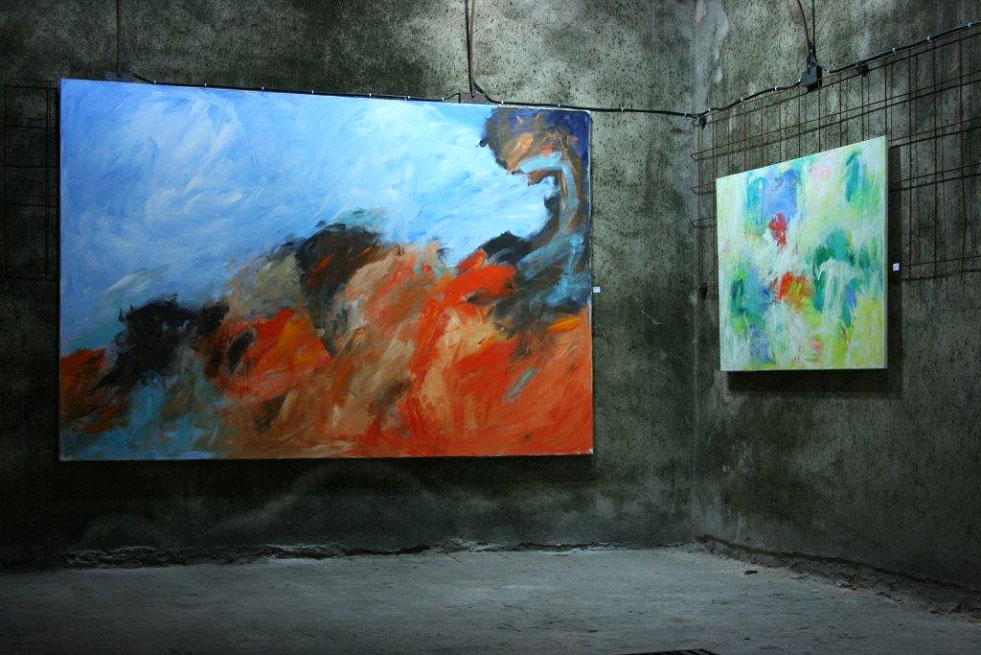
Notwithstanding that in the home country retirees naturally reduce their activities over the winter, for reasons of accessibility and climate, and that even in the summer, their participation is often limited due to distances and traffic, these factors are often ignored when abroad.
Any analysis of the profile of any region should take into account three very important factors:
⦁ availability: the variety of activities during the winter;
⦁ accessibility: the ease of access to the activities, both in terms of distance and physical access; and
⦁ affordability: whether someone on a limited budget (such as a pension) will be able to participate in multiple activities
This winter in the Algarve has been very busy. October set the scene with the World premier week of the Holman and Ash musical, Blind Faith. Audiences were treated to the talented duo’s music and lyrics in preparation for the planned Cathedral tour of the UK in 2015. November saw a new exhibition at the country’s largest private art gallery, located in Lagoa, with visitors afterwards opting for a wine-tasting of regional vintages, or participating in an art auction. During the month, guests took their pick from several music performances by the region’s orchestras, and some attended the hilarious production of Donizetti’s comedic opera Rita, ou le Mari Battu, at the Municipal theatre in Portimão for €15 a head.
Early December, after an unusually long late November rainy spell, saw the return of bright, sunny days. A beautiful (and free) performance by the woodwind orchestra of the Algarve, with participants aged 8 to 60, was followed by the Russian ballet which graced the region with its superb performance of Tchaikovsky’s classic Swan Lake, at €25 per ticket. Perhaps a larger stage would have done greater justice to the grace of the international dancers but being a winter performance, the organisers opted for a 300-seater, fully accessible auditorium. Some visitors looking for an authentic insight into the region, took the leisurely €20 round-trip boat trips to Silves, the Algarve’s original capital, with its mix of Moorish and Roman influences, departing from the river mouth of the Arade River. Time for a leisurely stroll along the river in the town, as well as through some parts of the city, before taking in a 3-course meal at a local restaurant (drink included) for €7.50 a head!
Roll in January and New Year’s resolutions. For some visitors these included visiting the converted sardine factory in downtown Portimão, now a modern museum (€3 at the door), or the new wax museum in Lagos, paying tribute to the discoveries, at €4. A stunning evening jazz performance by the region’s jazz orchestra, at €6, was complemented by young talent entertaining for free in several locations around Lagoa, making an event out of a visit to the post office or to the library.
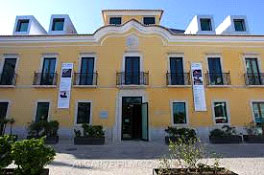
The Al Mouraria group, combining traditional Portuguese fado with the rhythm of the Argentinean tango, entertained guests for €9 at an evening performance in town, and some visitors are already looking ahead to stellar performances of the Hunan acrobatic circus, in Lisbon and Portimão. With so much cultural variety, it was surprising that almost 80 local and visiting golfers found the time to participate in the year’s first amateur competitive golf event on the busy golfing, but the €75 cost per couple, including a buggy, might have just been a factor! The sport had in November been the main attraction at the Portuguese disabled golf championship. For others, the beautiful coastal walks (no cost and majestic views) were just the tonic to an eventful winter in the Algarve.
Just as the Algarve is Europe’s most famous secret, so too the variety of activities, many of them cultural, is proving to be an irresistible allure… Winter visitors abroad are encouraged to speak to insiders to get insights into the wealth of activities on offer. For any visitor to Southern Europe, it’s not only about who you know, but whether they can tell you what is happening and where! I suppose we could say – Viva Culture!
Art in Algarve Emulates Multicultural Community
by Luis Teixeira da SilvaArt in Algarve Emulates Multicultural Community
It’s not quite Miami, or the melting pot that is São Paulo, or Paris with its quartiers, or even London with its myriad Tube stops, many of which represent gateways to miniature international communities. But art in Algarve has its own ‘identity’ influenced by the vast range of nationalities represented in such a small area: Portuguese, German, British, Dutch, American, Canadian, Norwegian, Swedish…the list goes on.
In a regulated world, one where individuality is a treasured human trait and where public expressions of personal taste are increasingly uncommon, art continues to stand out as a medium for expression that crosses the cultural divide. Few places are more symbolic of the Algarve’s thriving multinational community than Arte Algarve, the unique space nurtured into the country’s largest privately-owned gallery by its founder Rolf Osang.
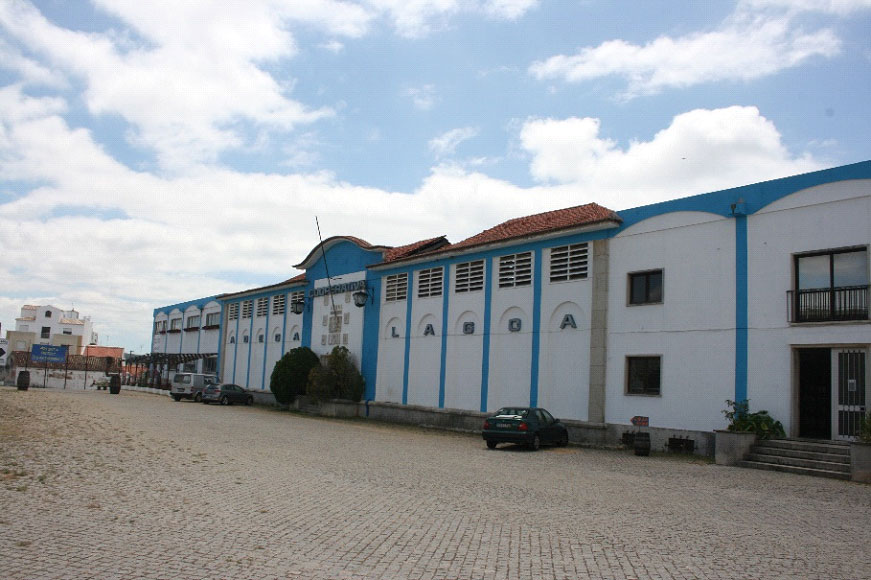
Arte Algarve (art in Algarve) is being developed into a multi-functional space, including a permanent home for art auctions (the first of which planned for July 19th 2014, where more than 170 works will be on sale), and will in the future include a shop for local arts and crafts and an area serving drinks and light snacks. It already houses a permanent Algarve art section, a rotating monthly exhibition and a cross-section of artists in its main gallery.
Artistic multiculturalism is evident in the works that grace the amazing space of the Arte Algarve (art in Algarve) building.
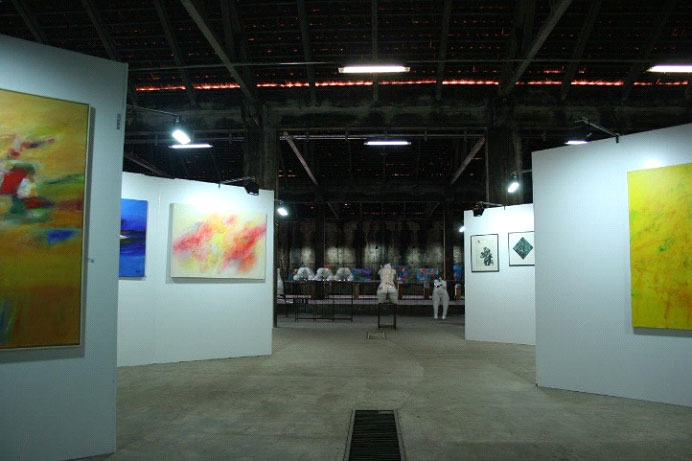
Immediately evident is a blend of an original, almost ethnic, vein, as expatriate artists remain true to their roots, yet create unexpected contrasts with moments of inspiration brought on, one would imagine, by the omnipresent light.
From humble beginnings at a local arts market, Rolf Osang understood that the combination of the region’s beauty, its demographics and the “extraordinary quality of its light”, represented an opportunity to incubate the region’s artistic talent.
Art in Algarve is ‘mature’ art, not only because many of its protagonists are seniors, but because the genre, themes, even the materials chosen are a reflection of a process of experimentation and maturation which sees each artist find the combination that is a perfect match to their taste, style and personality.
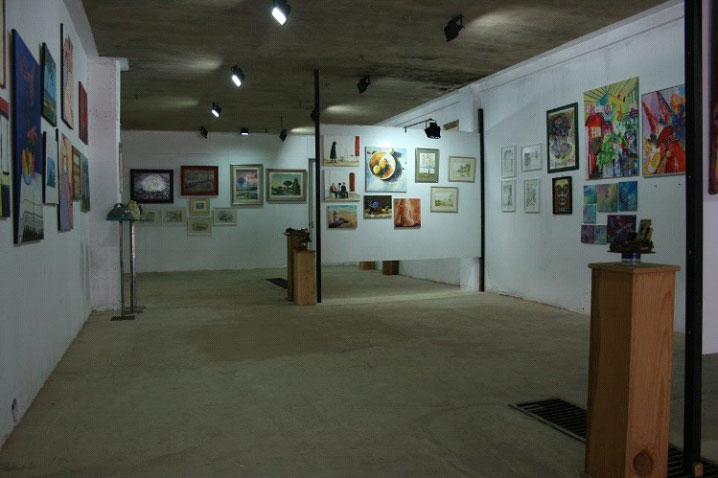
This recurring light motif (sic), present in so many of the works, where artists dare to be bold with colours and strokes, mirrors the physical structure itself, where the badly aligned roof tiles let in scintillating shafts of light while keeping the infrequent rain waters at bay. The combination of natural and artificial, direct and indirect lighting, sets the ambience which renders the massive space surprisingly intimate. The space itself is free of preconceptions and lends itself to the art connoisseur or the person with a love for beauty.
The variety of the work on display, which represents 70 artists in the main gallery alone and rotates every four months, means that a visitor can spend as little or as much time with each artist, choosing to simply gloss over those which are less to their liking. The way in which the gallery is organised, reminiscent of a traditional market where works by each artists are ‘clustered’ (without doubt influenced by Rolf Osang’s early experiences in the region), allows art lovers to find common themes, soothes the transitions between artists, and aids comparisons.
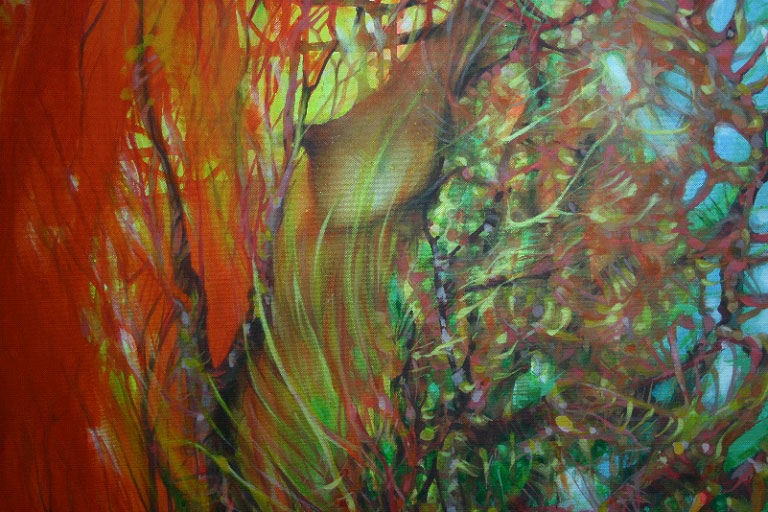
I reluctantly exited the main gallery, feeling guilty that I had not dedicated enough time or attention to any of the artists. I carried this feeling with me until I exited the building itself and looked back. There, I observed the unremarkable structure, a seemingly abandoned winery that had seen better days. My eyes could no longer see the drab outside that daily passers-by on the EN125 road observe, but instead the wonderfully reincarnated interior whose soul was an improved version of a former self. How interesting, I mused, that the senior artists whose works were brought to public attention in this once discarded space, had repaid the old dame with a new lease of life.
Another (boring?) weekend in paradise
by Luis Teixeira da SilvaWe hear it all the time. Went on holiday but there was nothing to do. Great beaches, plenty of sunshine, but how can we otherwise occupy our time? The other day, I even had to convince a Portuguese person that he was falling into the trap of paying lip service to that ill-gotten, and much maligned, it must be said, reputation which places like the Algarve have earned, for being, dare we say it: boring?
Our weekend started before we realised the week had ended. The first of the summer’s night tournaments was being held at the Portimão tennis club and we had one of the family members playing in the seniors event. The warm-up was interrupted by a phone call to attend a meeting and by the time I returned to offer my support, the match was well into the second set. Two and a half hours later, with plenty of bifanas and refreshments being liberally distributed among the attendees, singles and doubles matches were still in full flow. In this tournament there was even a celebrity attendee. Stefan Edberg, former world number 1 and a frequent visitor to the Algarve, brought his family along to watch his son play. The only give-away that they might not be local club members, was the group of blonde-haired supporters sitting on the long wooden benches alongside an otherwise dark-haired audience.
The first night was an early night, as players and supporters managed to get away by 01:30 and doubles was largely held over until the following evening. Nonetheless, the next morning I drive over to the same club because a younger family member is participating in an U/12 tournament. Hours and several victories later, and we are looking at another full day on the Sunday interrupted only by the continuation of the senior tournament in the evening.
Much to my disappointment I don’t make it over to the Arte Algarve gallery in Lagoa which holds its first auction. Around 80 people attend to see 170 works go under the hammer. Interest is good for this debut occasion and more than 20 works, including prints by well-known Portuguese artist Guimarães and famous Spanish painter Miró, are sold off to art lovers.
From there, it is only a short hop to the Feira do Doce Conventual, a traditional sweets fair held annually in the beautiful Convent of São José. The visitor is greeted by the gentle sounds of a saxophone and flute duo, soloists drawn from the local orchestra. As much a feast for the eye as for the taste buds, the event includes the Big 4 of endogenous ingredients: carob, orange, fig and almond. My comment to one exhibitor that the mere sight of such sweetness is enough to increase cholesterol levels is not appreciated by the person in question, but other visitors smile between mouthfuls of sweets. Outside, the traditional fado performers are getting ready to entertain the visitors, their haunting melodies soon floating into the balmy night air.
Sunday’s tennis more than eliminates any excess that might have resulted from the previous night. Players and families leave the club after the finals. Just enough time to wander down to the waterfront and treat everyone to an ice cream…just another weekend in paradise…
Billy Ocean 64-year old steals the show
by Luis Teixeira da SilvaRemember the 80s, rejoice the senior artists – Billy Ocean!
The largest-ever crowd at a Cascais Revival Festival was restless. A rushed performance by the preceding act, who were eager to be off to see England play in the World Cup, had sprinkled the warm night air with tension. Among the assembled audience the anticipation steadily grew as the crew meticulously rolled out, positioned and locked into place the drum kit, the backing singer microphones, the saxophonist’s stand, and then, in turn, the remaining equipment.
The musicians and backing vocalists to make their way onto a stage tinged with blue light. In what seemed like seconds, they found their groove and a jazzy, soulful instrumental set the scene for what was to come.
Billy Ocean arrived, strolling like a youngster between the backing singers and the bass player, with his trademark permanent smile lighting up a face seemingly untouched by age. The main sign of ageing was the silver-white Rastafarian locks tied neatly into a ponytail.
Initially a little faint, but quickly increasing in volume as he found his stride and mastered the acoustics, the voice was barely changed from the 80s. A little twirl, a finger immediately singling out someone in the crowd – creating an instantaneous personal link with each and every person – and the audience was soon chanting out the chorus of ‘Stand up – Stand Up’.
Billy Ocean owned the stage as he delivered wonderful renditions of many of his greatest hits, including Mystery Lady, Suddenly, Getta Outta My Dreams, and When the Going Gets Tough. One moment we were listening to the slow and soulful Colour of Love, the next the slightly snappier but equally soul-filled Love Zone, and then onto the catchy pre-80s Love Really Hurts Without You. During the entire show, he treated the audience to some smooth moves, little shuffles, sidesteps and moments of introspection, still able to lose himself in his art. I admit I was concerned he would displace a hip at the start of Loverboy, but from the shouts and hoots from some ladies in the audience, it was clear his sacrifice was appreciated!
Affable and engaging, Billy Ocean displayed all the traits of a man at ease with himself and the world around him. He epitomised, I thought to myself as the music rolled on and I watched him sing and dance on the stage, the image of the mature individual, or senior, who is able to do things he likes after a long working career. Of course, in Billy Ocean’s case, his ‘hobby’ happens to be the same as his life-long profession, but I thought it illustrated the point nonetheless. It was clear that his decision to continue to perform was purposeful. When he introduced one of the backing singers as his daughter, part of his motivation was there for all to see – the opportunity to perform with one of his children. Similarly to Kim Wilde, who on the previous evening had been accompanied by her vivacious daughter, here was a man who, happy with his own life, was now able to impart some of that joy and energy to others, even at sixty four. In fact, I thought, it is probably because he is enjoying life that he is able to find a connection to the audience so easily.
During the concert, I looked around the audience and saw a variety of ages, mostly middle-aged couples, but some seniors, a few youngsters who had accompanied parents and several young adults who arrived in groups or as couples. People quickly lost their inhibitions, dancing (or shuffling) to the songs that they remembered or simply because they liked the tune. I found myself unashamedly singing along, surprised that I could recall so many of the lyrics and embarrassed that my booming voice was so off-key. This was pop music at its most interactive. The artist danced and the audience followed suit.
When he bade the audience farewell, everyone knew he would be back for an encore, but no one begrudged him a little ‘time out’ to recover after almost an hour and a half on stage. And surely enough, he was back out to sing two more tunes, ending as expected with his massive hit Caribbean Queen (which I half expected him to do in the European Queen version, given where he was).
I observed the crowd as it melted, slowly, into the moonlit evening, and chatted to someone who I think expressed the general sentiment: “What an artist. Kim Wilde was good last night, as was Rick Astley, but Billy Ocean was fantastic. At his age, what a show! And what a personality!”
I’m sure I speak on behalf of everyone in the audience when I say: It would be a pleasure to have this young-at-heart 64-year old back to entertain us again in the future. Well done, Billy Ocean, on such an engaging performance and to being a testament to what an active senior life should be like!
Cascais Revival Festival REMEMBERED!
by Luis Teixeira da SilvaCascais Revival Festival REMEMBERED!
The largest-ever crowd at a Cascais Revival Festival was restless. A rushed performance by the preceding act, eager to be off to see England play in the World Cup, had sprinkled the warm night air with tension. Anticipation steadily grew as musicians and vocalists made their way onto a stage tinged with blue light. In seconds a jazzy, soulful instrumental set the scene for what was to come.
Billy Ocean strolled on, his trademark permanent smile lighting up a face seemingly untouched by age. The main sign of ageing was the silver-white Rastafarian locks tied neatly into a ponytail. Initially a little faint, volume quickly increased as he found his stride and mastered the acoustics, his voice barely changed from the 80s. A finger singled out someone in the crowd to create an instantaneous personal link with each and every person. The audience was soon chanting out the chorus of ‘Stand up – Stand Up’.
He owned the stage delivering wonderful renditions of his greatest hits; Mystery Lady, Suddenly, Get Outta My Dreams, and When the Going Gets Tough. He treated us to some smooth moves – shuffles, sidesteps and moments of introspection, still able to lose himself in his art. I was concerned he would displace a hip in Loverboy, but from the ladies’ shouts and hoots, his sacrifice was clearly appreciated! Affable and engaging, Billy Ocean displayed all the traits of a man at ease with himself and the world. As the music rolled on and I watched him sing and dance on the stage, he epitomised the image of the mature individual able to do the things he likes after a long working career. Introducing one of the backing singers as his daughter, part of his motivation was plain to see – the opportunity to perform with one of his children. Here was a man, happy with his own life, who could now impart some of that joy and energy to others, even at sixty four. When he bade farewell, everyone knew he would be back for an encore. Sure enough, he came out to sing two more hits. As the crowd melted, slowly, into the moonlit evening, someone I chatted to expressed the general sentiment: “What an artist. Kim Wilde was good last night, as was Rick Astley, but Billy Ocean was fantastic. At his age, what a show! And what a personality!”
Well done, Billy Ocean, such a testament to what an active senior life should be like!
Europe’s Best Kept Secret
by Luis Teixeira da SilvaEurope’s Best Kept Secret
Europe’s best kept secret. That’s how this part of the world is often described. Why? Because it has Europe’s best beaches, Europe’s best golf courses, one of Europe’s friendliest folk, it’s the chosen retirement destination for over 100,000 resident expatriates, and, added to all that, it’s Europe’s newest tax haven.
Several international publications have ranked Portugal as one of the best overseas retirement destinations, including the British broadsheet the Telegraph, which rated the country asthe “2nd best place to retire abroad.” A safe region, with very little crime and a laid-back lifestyle for expatriates, this destination caters equally to families and retirees, due to the wide variety of cultural, nature-based, sporting, gastronomic, and other activities. Long a popular summer destination for sunseekers and a winter-stay retreat for those getting away from Northern Europe’s colder months, the Algarve receives more than 5 million annual visitors through its airport alone, swelling the local population of approximately 350,000. Add to this the fact that it is the Portuguese people’s preferred holiday destination and that the Spanish love to visits its wilder western coast, and you begin to understand why, at peak times, several million more come here to experience its beauty.
Expect to enjoy the lifestyle if you holiday, study, or retire here, but count on some frustration if you move to the region to work. Business bureaucracy and the shrinking of the economy because of the financial crisis of 2008, mean that the region is not the obvious choice for those looking for employment. Entrepreneurs, on the other hand, will find that the region’s excellent communications infrastructure, pleasant working environment, and cheap and talented labor force, together with a range of EU and national incentives to encourage start-up activity, may well make this a preferred location for launching new business ideas.
If you are looking for a mix between the Algarve’s historical roots and the spectacular beaches for which it is famous, then look no further than Silves and Lagoa. These two municipalities, located slightly west of center in Portugal’s southernmost province, allow residents to experience the best the area has to offer.
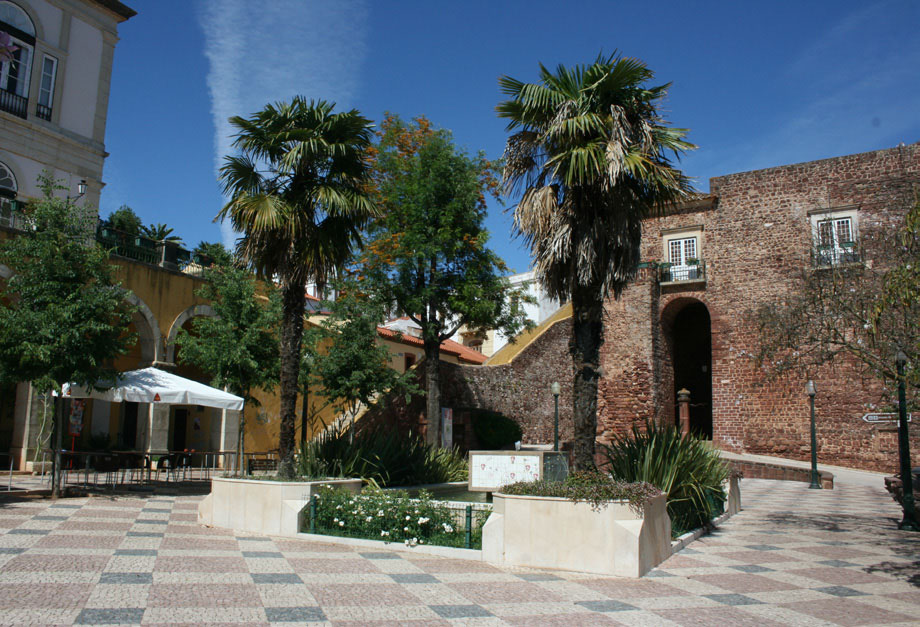
Silves, nestled in verdant valleys surrounded by the country’s largest citrus-growing area, and on the banks of the Arade River, which is navigable to where it meets the sea at Portimão, offers a warm microclimate, and visitors here will feel comfortable all year round…but perhaps just a little flustered when temperatures soar in the summer! Silves’ undulating hills are located inland in the region known as the barrocal (pronounced “buh-rroh-kaal”) and are covered with indigenous bush and scrubland interspersed with the triad of regional trees: olive, carob, and fig. The barrocal and its fauna contrasts sharply with the expanse of white sandy beach of its only coastal town, Armação de Pêra.
For a variety of beaches, hop over to neighboring Lagoa, with the capital town of the same name, which is a much smaller municipality located close to the ocean. Most of its activity is related to tourism around the coastal resorts towns of Carvoeiro (pronounced “kuhr-voo-ey-roo”) and Ferragudo. Here’s my video tour of the area including the main towns covered in this issue of the ORL.
With the Portuguese being the largest fish eaters per capita in Europe, finding fresh fish at one of the many daily markets is not difficult. Add to that a variety of fresh produce grown in the region and available in the local markets of both towns, and there is no excuse for unhealthy eating of any type! Wash your meal down with one of several local wines and you have the makings of a superb, yet healthy, gastronomic lifestyle.
Portugal has, according to a past Bloomberg report, the lowest cost of living in Western Europe. A variety of competing supermarkets in the Silves and Lagoa area make this area on average 30% cheaper than most European countries further north.
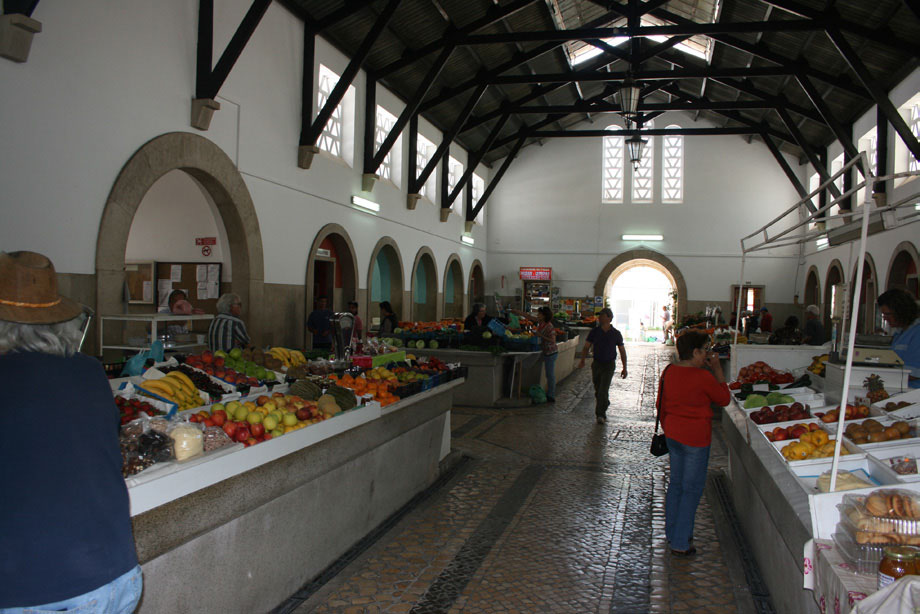
The Silves and Lagoa areas are positioning themselves as leaders in the retirement sector within the Algarve, Portugal, and Iberian Peninsula. Two of the region’s pioneering projects in senior living will be launched in these two municipalities— see “Making The Right Property Choice” for more information.
Add to these factors recent legislation that allows many foreign residents to receive pensions tax-free in the country, and you would be hard pressed to find many similarly attractive retirement destinations in the heart of Europe, because the Algarve is Europe’s best kept secret.
